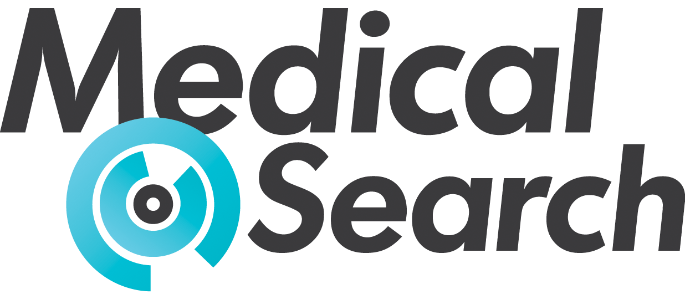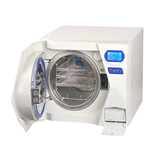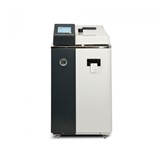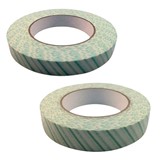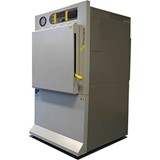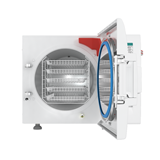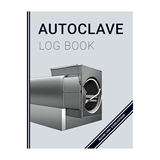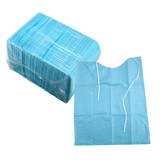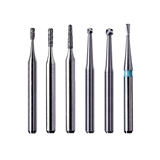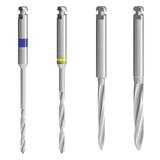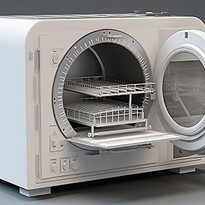Compare dental autoclave prices in Australia. Find the best models, financing options & compliance tips for your clinic.
Key takeaways
- Prices typically range from $3,000 to $15,000+, depending on chamber size, automation level, and compliance features.
- Class B autoclaves, mandatory for most Australian dental practices, start at around $5,000 and are essential for sterilising hollow instruments, handpieces, and porous loads.
- Sterilisation cycle times vary from 15–60 minutes, with faster cycles available in premium models like the Mocom B Futura and Melag Vacuklav.
- Servicing costs can range from $300 to $1,000 annually, depending on the make and model.
- Compliance standards such as AS/NZS 4815:2006 and AS/NZS 4187:2014 are mandatory for Australian dental autoclaves.
- Financing options from $25 per week are commonly available through suppliers, making high-end autoclaves more accessible.
- TGA approval and built-in printer or USB tracking are essential features for maintaining audit-ready sterilisation records.
Introduction
Sterilisation is the backbone of any safe, compliant dental practice. A high-quality dental autoclave is essential for infection control and must meet strict Australian regulations. Whether you're setting up a new dental clinic or upgrading existing equipment, this guide will walk you through everything you need to know to choose the right dental autoclave—from pricing and features to compliance, maintenance, and financing options.
Types of dental autoclaves
1. Class B autoclaves (vacuum-based)
Best for: General dental practices
- Use a vacuum pump to remove air and ensure deep steam penetration.
- Can sterilise hollow, wrapped, porous, and solid items.
- Compliant with EN 13060 and mandatory in most Australian dental practices.
2. Class S autoclaves
Best for: Minor procedures or backup units
- Suitable for solid and some simple hollow instruments.
- No pre-vacuum function—limited to less complex sterilisation needs.
3. Class N autoclaves
Best for: Non-critical use, not recommended for dental practices
- Only sterilise solid, unwrapped instruments.
- Not compliant with AS/NZS 4815 for general dental use.
Dental autoclave prices in Australia
Dental autoclave prices in Australia depend largely on the machine’s class, chamber size, features, and compliance capabilities. Here’s a breakdown to help you understand what to expect:
- Class N autoclaves: These are the most basic type, suitable only for sterilising solid, unwrapped instruments.
- Priced between $3,000 and $5,000
- Not recommended for dental clinics due to limited functionality and non-compliance with Australian dental standards
- Class S autoclaves: Offering intermediate functionality, Class S autoclaves can handle some wrapped and hollow instruments depending on the manufacturer’s design.
- Typically range from $4,000 to $7,000
- May suit small practices but still fall short of full dental sterilisation requirements
- Class B autoclaves: These are the standard for dental practices in Australia, capable of sterilising wrapped, hollow, and porous instruments to meet stringent compliance standards (AS/NZS 4815).
- Start at approximately $5,100 for a 12-litre unit
- Larger, faster, and more advanced models with features like vacuum drying, touchscreen interfaces, and data logging can cost upwards of $15,000
Keep in mind:
- Prices can vary depending on the brand, local supplier support, and additional costs such as delivery, installation, and training.
- While Class B autoclaves come at a higher price point, they’re a long-term investment in compliance, efficiency, and patient safety—making them the preferred choice for modern dental clinics.
Cost drivers:
- Chamber capacity: 18–23 litres are most common.
- Cycle speed and drying time
- Printer/data logging capability
- Touchscreen interface and automation
- Brand and build quality
How dental autoclaves work
Dental autoclaves sterilise instruments using pressurised steam at high temperatures (typically 121°C to 134°C). Here’s the basic operation cycle:
- Pre-vacuum phase: Removes air from chamber (Class B only).
- Heating phase: Steam is injected and temperature builds.
- Sterilisation phase: Instruments are exposed to saturated steam for 15–20 minutes.
- Drying phase: Ensures moisture-free instruments to prevent corrosion or contamination.
Modern units offer pre-set cycles optimised for wrapped, porous, or delicate instruments.
Maintenance and running costs
Routine maintenance
- Daily cleaning of chamber and trays.
- Weekly draining and water reservoir rinse.
- Monthly filter checks and calibration.
Annual servicing
Expect to pay $300–$1,000, which may include:
- Gasket replacements
- Chamber pressure testing
- Software updates
Common parts and replacements
- Door gaskets: $50–$150
- Water filters: $30–$100
- Printer paper rolls or USB updates
Keeping a maintenance log is essential for audit readiness and compliance.
Installation and Setup Considerations
Proper installation ensures optimal performance and compliance:
- Power Requirements: Ensure the autoclave matches your clinic's voltage and amperage specifications.
- Water Supply: Use distilled or demineralized water to prevent mineral buildup.=
- Ventilation: Install in a well-ventilated area to dissipate heat and moisture.
- Space Allocation: Allocate sufficient space for the autoclave and ensure easy access for maintenance.
- Professional Installation: Engage qualified technicians for installation to comply with AS/NZS 4815:2006 standards.
Compliance and certification requirements
Australian dental practices must follow strict infection control guidelines:
Relevant standards
- AS/NZS 4815:2006 – Office-based healthcare sterilisation
- AS/NZS 4187:2014 – Reprocessing of reusable medical devices in health organisations
Must-have compliance features
- Vacuum-based sterilisation (Class B)
- TGA-listed medical device
- Cycle recording (printer/USB)
- Bowie-Dick test compatibility
Before purchase, confirm your autoclave is TGA-registered and supported by a local distributor for maintenance and validation services.
Financing your dental autoclave
Investing in a reliable, standards-compliant autoclave is essential, but the upfront costs can strain cash flow — particularly for new or expanding practices. Fortunately, financing options in Australia make it easier to access high-quality sterilisation equipment without compromising your budget.
Typical financing options
Most Australian equipment suppliers or brokers offer a range of dental autoclave finance solutions tailored to your practice’s needs:
- Chattel mortgage (equipment loan): This is one of the most common options, allowing you to own the equipment outright while making regular repayments. Interest and depreciation may be tax-deductible.
- Leasing or rent-to-own:Ideal for practices looking to upgrade every few years, leasing provides access to the latest models with lower upfront commitment. Ownership may transfer at the end of the lease term, depending on the agreement.
- Business equipment finance brokers: Using a broker can help you compare lenders, tailor repayment terms, and potentially access better interest rates or repayment holidays.
Example repayments
Your actual repayments may vary based on credit profile, lender rates, and loan structure, but here are realistic weekly repayment estimates over a 5-year term (at ~8.5% p.a.):
- $6,000 autoclave – approx. $30–$35 per week
- $12,000 autoclave – approx. $60–$70 per week
- $15,000 autoclave – approx. $75–$85 per week
Benefits of financing
Financing your autoclave isn’t just about affordability — it also opens up key advantages:
- Preserve cash flow – Spread the cost over time, freeing up capital for other clinical upgrades or staffing.
- Tax benefits – Equipment loans may allow for GST claims, interest deductions, and depreciation.
- Instant asset write-off – If eligible under the current ATO temporary full expensing or instant asset write-off schemes, you may be able to claim the full amount as a tax deduction in the year of purchase (speak with your accountant).
- Faster upgrades – Leasing options make it easier to stay current with evolving compliance standards or newer sterilisation tech.
Top features to look for
- Fast cycle times under 30 minutes
- Quiet operation
- Touchscreen interface
- USB or cloud-based data logging
- Self-diagnostic error reporting
- Smart water management
Common questions buyers ask
Do I need a Class B autoclave in Australia?
Yes, for most dental clinics, a Class B autoclave is mandatory to meet AS/NZS 4815 standards. It’s the only class capable of fully sterilising hollow instruments and wrapped loads.
How long do autoclaves last?
Most quality models last 7–10 years, with proper servicing. Leading brands offer warranties from 2–5 years.
What is the difference between steam and dry heat sterilisation?
Steam sterilisation (used in autoclaves) is faster, safer for most instruments, and compliant with Australian dental standards. Dry heat is less common and often unsuitable for dental use.
How often do I need to validate or test the machine?
- Daily: Leak test, vacuum test
- Weekly: Bowie-Dick test
- Annually: Full validation service by a qualified technician
Can I use tap water in my autoclave?
No. Only use distilled or demineralised water to prevent scale build-up and ensure compliance.
Conclusion
Choosing the right dental autoclave is not just about sterilisation—it’s about protecting your patients, staying compliant, and safeguarding your practice from audit risks. In Australia, investing in a Class B autoclave with the right features, certification, and servicing support is essential. Whether you're financing or buying outright, ensure you're getting a reliable, TGA-approved machine that suits your clinic’s daily workload and future growth.
